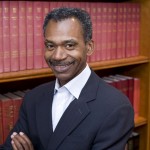 by Michael Jarrett
by Michael Jarrett
Identifying the types of political behaviour in your organisation is the first step to using it for positive change.
Dysfunctional politics can sink an organisation, but it can also be a force for good. This makes many executives frown, but the reality is that politics is normal – and too often a hidden barrier to effective strategy execution. In fact, without it, some strategic changes may not be possible.
Political behaviour allows differences to be shared and methods to be employed in strategy execution that go beyond the rules and norms of the organisation. Thus it’s important for leaders to understand the forms it can take and how they can harness it.
While we would be naive to ignore the potentially destructive nature of politics, when deployed effectively it can actually help the company meet its strategic goals and live up to its values, especially during change efforts.
Defining politics
Organisational politics refers to a variety of activities associated with the use of tactics to influence or improve personal or organisational interests.
Studies have shown that those with political skills do tend to outperform their politically naive counterparts. However, political behaviour is relative. It is implicit in many cases. For example, it may be the case that a manager or leader needs to exert a large amount of pressure on a team to get something done by using the power of their position over others. It is also occasionally necessary for employees to work behind the scenes to build coalitions of believers in a new vision. Politics is driven by the conditions of scarce resources, social and structural inequalities and individual personal motivations.
Thus, the first step to using politics requires executives to map their organisation’s political landscape and understand the sources of political capital they have.
The political terrain
Most organisational maps are characterised by four metaphoric domains; the weeds, the rocks, the high ground and the woods. Each has a different set of rules for skilful navigation.






 There were many late nights during Thomas’s time at a private equity firm, but two of them really stand out. On the first, he was at a bar. Earlier in the day, his boss had let him know that he was the top performer in his cohort. Over drinks that evening, he struck up a conversation with a partner at a rival firm. “You’re the guy who closed two deals in six months, aren’t you?” the man asked. It was a moment Thomas had dreamed of and worked for since leaving his small town for college, the first in his family, years before.
There were many late nights during Thomas’s time at a private equity firm, but two of them really stand out. On the first, he was at a bar. Earlier in the day, his boss had let him know that he was the top performer in his cohort. Over drinks that evening, he struck up a conversation with a partner at a rival firm. “You’re the guy who closed two deals in six months, aren’t you?” the man asked. It was a moment Thomas had dreamed of and worked for since leaving his small town for college, the first in his family, years before.
 The successful candidate will have responsibility for managing the delivery of services to maximize contribution to the success of major global clients. Services include Electronic Payment Services and other Order to Cash operations which include Credit, AR and Collections management, Cash Applications, Billing, and back office finance processing and customer services.
The successful candidate will have responsibility for managing the delivery of services to maximize contribution to the success of major global clients. Services include Electronic Payment Services and other Order to Cash operations which include Credit, AR and Collections management, Cash Applications, Billing, and back office finance processing and customer services. By Zeynep Ilgaz
By Zeynep Ilgaz